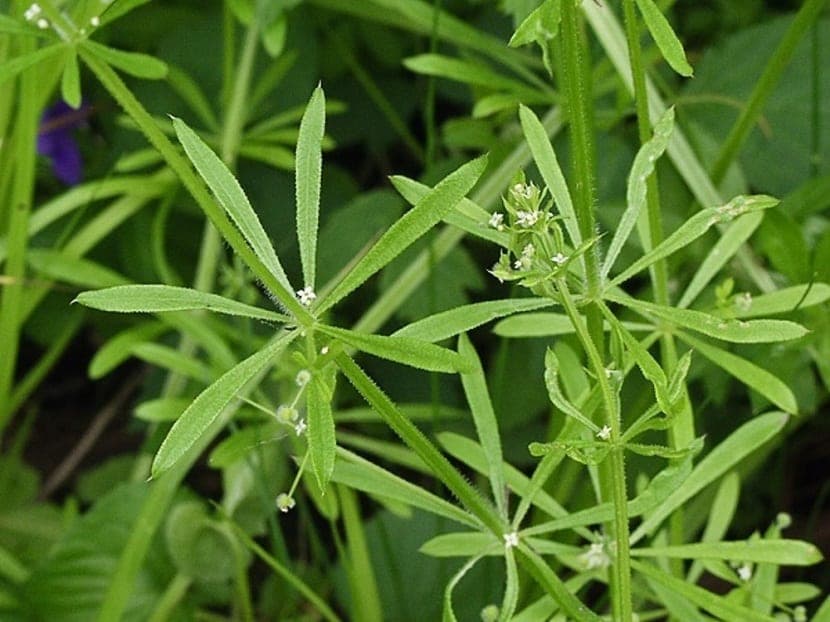
Scientific Name
Galium aparine
Common Names
Cleavers, Goosegrass, Stickyweed
Plant Family
Rubiaceae
Location
Native to Europe and North America. Found in hedgerows, forest edges, and gardens. Prefers moist, shady areas with rich soil. Considered a spring tonic weed in many herbal traditions.
Description
A clambering annual vine with whorled, narrow leaves and tiny hooked hairs that help it cling to other plants. Produces tiny white flowers and sticky seeds. The whole plant is juicy and bright green when fresh — almost succulent.
Uses
A gentle yet multifaceted tonic for the skin, lymphatic, urinary, and digestive systems. It is prized for its anti-inflammatory and antioxidant actions: extracts have demonstrated reductions in inflammation, swelling, and oxidative stress in vitro and in animal models. Its antimicrobial and wound-healing properties make it useful for skin irritations, minor wounds, burns, eczema, and acne, where topical applications, poultices, or washes are employed. As a diuretic and lymphatic tonic, cleavers aid in reducing fluid retention, supporting kidney and urinary tract function, and promoting the drainage of the lymph and detoxification. Mild tonic and alterative uses are also traditional: using infusions to support general vitality, especially in spring cleanses, and to support digestion and elimination. While not typically a strong carminative, its bitter and cleansing effects can indirectly ease mild digestive sluggishness and help settle irritation in the gut.
Energetics
Cooling, moistening, clearing. Moves lymph and fluids, especially in spring. Helps relieve internal "congestion."
Parts Used
Fresh aerial parts preferred
Constituents
Iridoids, flavonoids, coumarins, minerals, galiosin
Dosage
- Fresh juice or tincture: 10–30 drops, 2–3x/day
- Infusion (dried): 1–2 tsp per cup; steep 10–15 min
- Poultice: Crushed fresh plant applied to skin
Notes on Use
Cleavers is a go-to for swollen lymph nodes or sluggish spring energy. It’s especially good after illness or in the early stages of infection. Fresh is best — it loses some of its effectiveness when dried. Blends well with nettle and chickweed for spring cleansing formulas.
Harvesting
• Harvest before flowering when vibrant and juicy. Use fresh or juice immediately.
Contraindications
Very safe. May be too cooling for very cold constitutions if overused.
Recipes
- Spring Tonic: Cleavers, nettle, chickweed
- Lymph Move Tincture: Cleavers, calendula, echinacea
- Skin Detox Tea: Cleavers, red clover, burdock